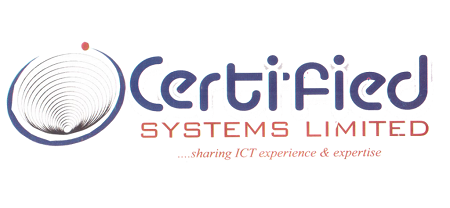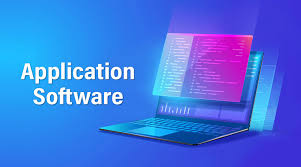What is Application Software?
Application software (App) is a kind of software that performs specific functions for the end user by interacting directly with it. The sole purpose of application software is to aid the user in doing specified tasks.
Web browsers like Firefox, and Google Chrome, as well as Microsoft Word and Excel, are examples of application software that is used on a personal computer or laptop. It also includes smartphone apps such as WhatsApp and Telegram, as well as games such as Candy Crush Saga and Ludo. There are also app versions of popular services that people rely on every day, such as weather or transportation information, as well as apps that connect end users with their businesses.
Functions of Application Software
Application software programs are generally designed and developed to help with a wide range of tasks. Here are a few examples:
- Software for healthcare applications for seamless connectivity and quick response
- Managing information and data in an organization
- Managing and checking documents across
- Software for educational purposes such as Learning Management Systems and e-learning systems
- Development of visuals and video for presentation purposes
- Emails, text messaging, audio and video conferencing involved in presentation
- Management of accounting, finance, and payroll helping the HR department and other businesses
- Enterprise Resource Planning (ERP)
- Customer Relationship Management(CRM)
- Management of any small or large scale project
- Management of smooth and efficient business processes
Examples of Application Software
A variety of explicit application software programs are available to help you manage your tasks, jot down notes, do online research, set alarms, keep an account log, and even play games. Application software packages are designed to do certain tasks, ease workflows, and improve team communication.
The most frequent applications used by millions of people on a daily basis are listed below.
- A collection of Microsoft software including MS Office, PowerPoint, Word, Excel, and Outlook.
- Common Internet browsers like Google Chrome, Safari, Firefox, etc.
- Graphics and designing software such as Canva, Adobe Photoshop, CorelDraw, and AutoCAD.
- Real-time online communication tools like Skype, Hangouts, Google Meet, Zoom, and Whatsapp for video, and audio calls and messages.
- Multimedia and music streaming software such as Wynk, Gaana, MX Player, VLC Media Player, Spotify, Pandora, etc. are used for entertainment purposes.
- Project management software like Teams, Asana Zoho, Slack, Forecast, etc for official purposes.
What to Look For in an Application Software?
Whether you are looking to purchase a new tool or replace an existing one, here are 7 things to consider. Use these suggestions to assist guide the software purchasing process if you want your team to feel confident when deciding what software to add to your IT stack.
How Much Does It Cost and What Is the Value?
Though pricing is vital to any business decision, it shouldn’t be the only element you consider. If you decide to purchase software only because of its price it might not guarantee your business the best value. Remember, a software’s cost is not always associated with its value.
Will You Need Assisted Implementation?
Software models that are highly complex and require a great deal of time to learn and master will negatively affect the adoption rates. Spend precious time investigating viable software alternatives so you can make the most effective and useful option for your organization and team that will save your team and project time and energy.
Is the Software Firm Willing to Fix Bugs?
Whenever you purchase any new software for your company, you should be well aware of the software company’s regular procedures for fixing bugs. Double-check with the company whether your company’s issue with the software will be solved whenever it occurs.
How Often Do They Push Updates?
Make sure to discuss with your software agents how often their product is updated and how those updates are conveyed to you.
Is the System Adaptable Enough to Satisfy Your Requirements?
Software that is highly customizable could also be complicated and cumbersome to implement and also the cost might also rise the more and more you try to customize it according to your requirements.
What kind of support do they offer?
Before purchasing, make a note of the support hours for every software agents you are considering, as the question of support hours should encompass not only the timeframes during which you can get support, but also how swiftly they can accomplish them. You should be able to check whether you can get just phone support, or if everything is done by email or the ticketing system.
What Level of Security Does the Software Offer?
Always take a careful view of the privacy policy provided by any software you are considering purchasing. This should therefore summarize everything you need to know concerning data collection, storage, and usage.
Need of Application Software
End-users can use application software to perform any type of single or many tasks. Following are a few reasons you would definitely need application software (App) on your computer:
- Helps the user in completing specific tasks: Any application software should, in general, be created with the end user in mind. They will primarily benefit the end-user by assisting them in doing specialized activities in a range of industries, including education, business, and entertainment. Microsoft Word, for example, is a commonly used application software that allows users to create, edit, delete, and perform other actions on word documents.
- Manages and manipulates data: Application software is used in businesses to manage and alter employee, customer, and other databases. An enterprise resource management system or a customer relationship management system are two common examples of application software.
- Allows users to effectively organize information: Data can be created and handled efficiently by individual users using application software. For example, Microsoft Excel is a very popular application software amongst companies that allows users to manage datasheets.
Types of Application Software
Application software can also be classified depending on how much it costs and how easily it can be accessed. Here are some examples of application software:
1. Word Processing Software
Word Processing refers to the act of using a personal computer (PC) or laptop to create, edit, save and print documents which can be performed only with specialized software known as a Word Processor. One example of a Word Processor is Microsoft Word which is widely used by all professionals.
2. Spreadsheet Software
Spreadsheet software is a type of computer program that enables a user to perform numerical functions and explore numbers through an automated version of an accounting worksheet. Best example of spreadsheet software is Microsoft Excel.
3. Presentation Software
Presentation software also commonly known as presentation graphics is a particular category of application program used to construct sequences of words and a series of pictures that tell a story or help support a speech or public presentation of any type of information or a launch of new products or services.
4. Multimedia Software
Multimedia software can be described as the combination of text, audio, images, animation, or video to produce a wide scope of interactive content for both professional and personal use. You can easily learn about media players, file formats, and how to operate audio and video software on the whole.
5. Web Browsers
A web browser can take you all over the internet. It retrieves data from other parts of the web and shows it on your desktop or mobile device for your viewing. The data is transmitted using the Hypertext Transfer Protocol, which describes how text, images, and video are shared on the World Wide Web.
6. Educational Software
Educational software refers to any computer software designed solely for educational reasons. It includes a wide range of software, including language learning software, classroom management software (CMS), and reference software for students and other professionals.
7. Graphics Software
Graphics software can rework with bitmap and/or vector graphics and can be utilized to create label templates. Graphics software generally includes Canva, Adobe Illustrator, Photoshop, InDesign, CorelDraw, Inkscape, Microsoft Paint, and Paint.Net.
8. Freeware
Freeware is typically marketed for profit but might be allocated specifically for a business or commercial purpose with the aim to expand the market share of any newly launched premium product. Some of the widespread examples of closed-source freeware include Adobe Reader, Free Studio, and Skype.
9. Shareware
Shareware is software that is supplied for free on a trial basis in order for the user to test or use the programme for a specific amount of days with the understanding that the user may need or want to pay for it later if they are satisfied with the product usage. Some software manufacturers provide a shareware edition of their product with an expiration date built in, such that after 30 days, the user or customer will no longer be able to access the application for further use.
10. Simulation Software
Simulation software authorizes engineers to evaluate, optimize, and compare product designs with other similar software by modeling real-world events in a computer-generated environment.
11. Open Source
Open source software is a specific code designed to be publicly accessible so that anyone can see, modify, and distribute the code as they see which fits the purpose. It is designed in a decentralized and coordinated way, depending on peer assessment and community production.
12. Closed Source
Closed source software is where the source code is not freely accessible. It is developed and delivered to the customer as a fully compiled, executable set of files. The developer often provides aid to users after purchase and ensures that the software works as foreseen by the creator.

